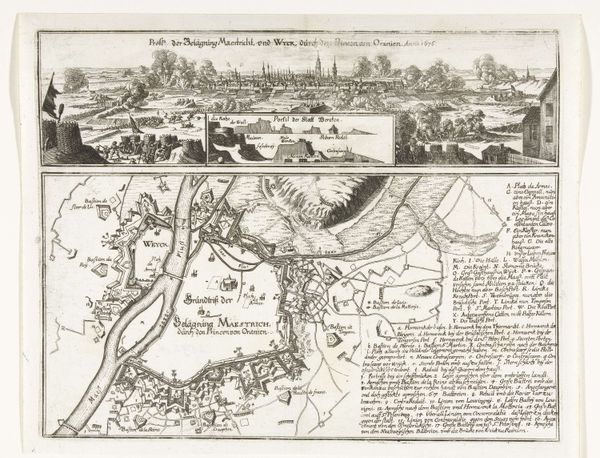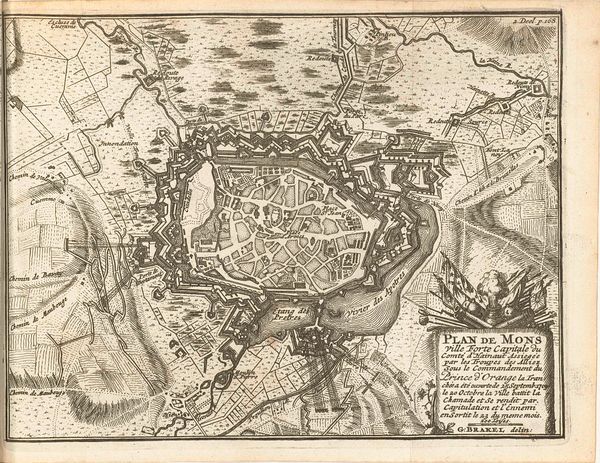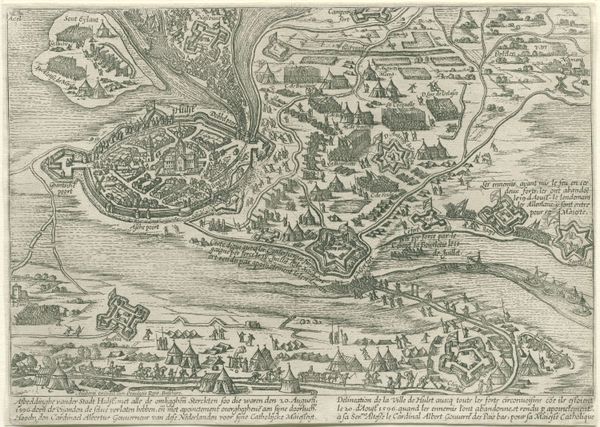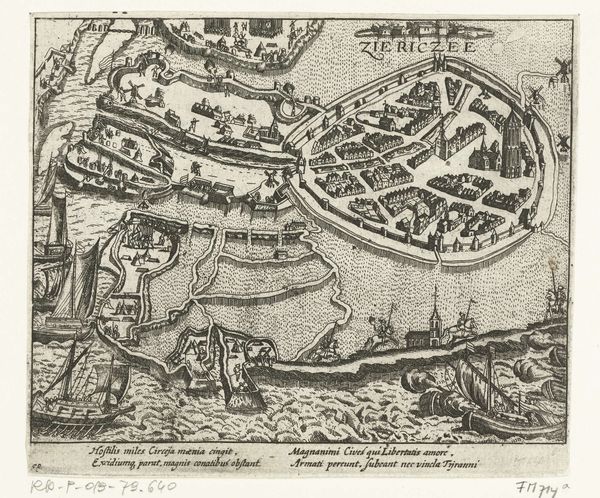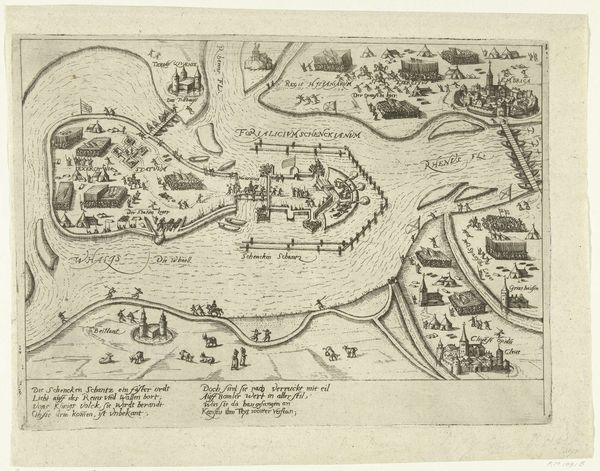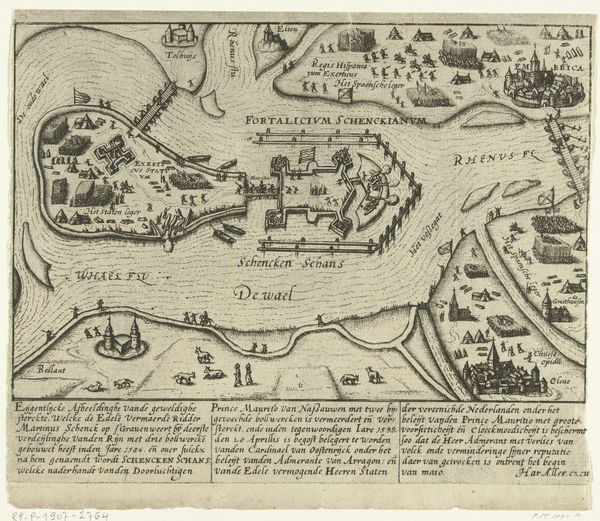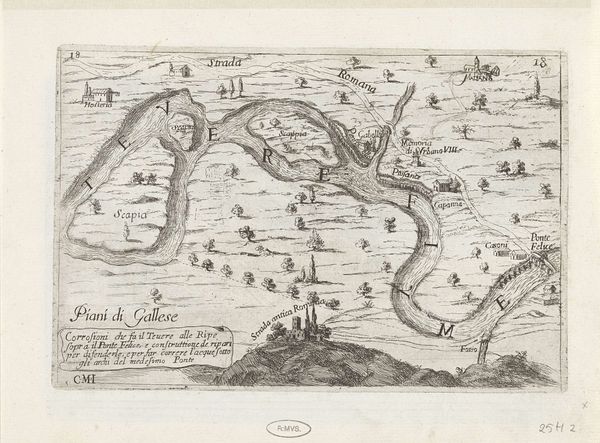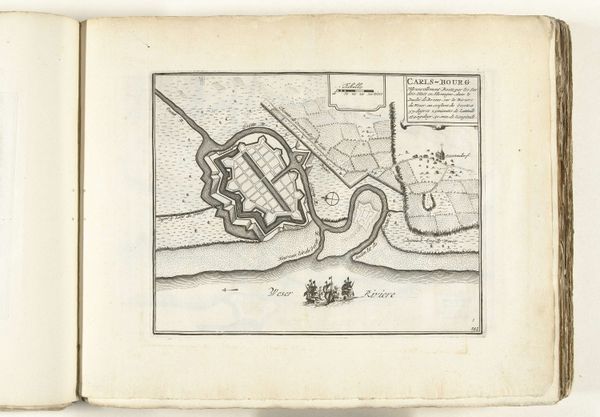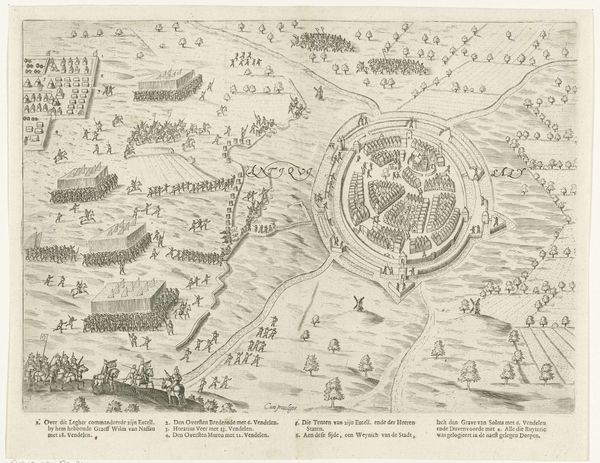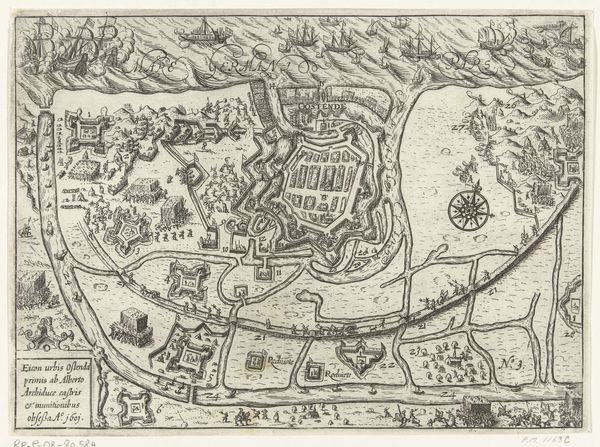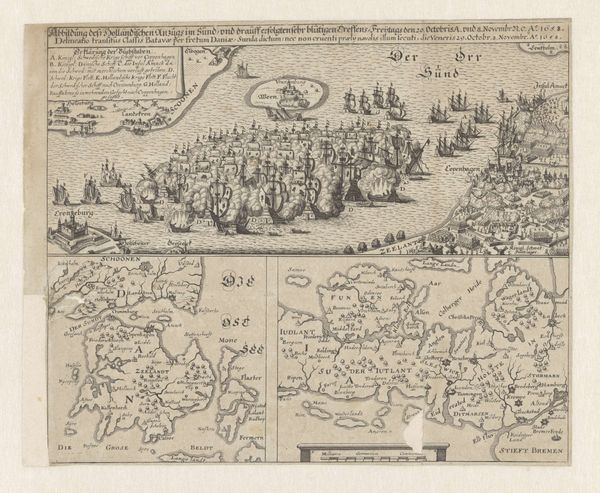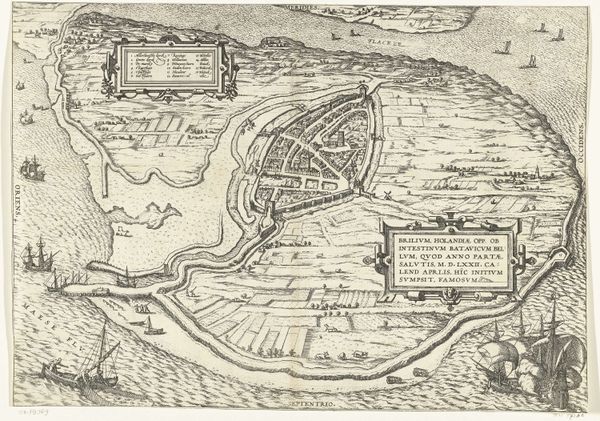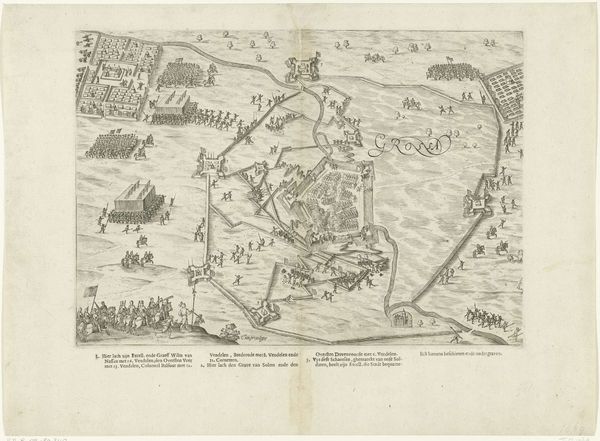
print, engraving
#
baroque
# print
#
old engraving style
#
cityscape
#
history-painting
#
engraving
Dimensions: height 150 mm, width 198 mm
Copyright: Rijks Museum: Open Domain
Editor: Here we have Matthijs Pool’s "Siege of Barcelona, 1706," an engraving dating from around 1714 to 1716. It's incredibly detailed; you can almost feel the tension of a city under siege. The scene appears meticulously planned and calculated. How should we interpret this visual representation of power and conflict? Curator: This image, while seemingly just a historical record, is a powerful statement about dominance and the violence inherent in state power. The crisp lines of the engraving contrast sharply with the chaotic reality of war, sanitizing the brutality. The map is presented from the perspective of the French besiegers. What does that say about who gets to write history, who gets to define the narrative? Editor: So, by presenting it as a map, it kind of...neutralizes the human cost? Curator: Precisely. The clean lines and organized layout erase the messy realities of conquest. Consider also the socio-political context: who was this image intended for? It’s not for the besieged, is it? It served to bolster the French monarchy, presenting the siege as a calculated victory. Do you think we can see reflections of this sanitized depiction of conflict in contemporary media coverage of war? Editor: I do see that. News coverage may celebrate technological and tactical advancements while glossing over the human impact. How does that continue a similar agenda? Curator: In ways that perpetuate harmful narratives about who "deserves" to win or dominate, normalizing inequality and dispossession. It encourages critical engagement with media, demanding that we interrogate power structures in shaping historical narratives. This engraving reminds us of how vital it is to critically analyze any presentation of conflict. Editor: I see how viewing it this way exposes the role of art as a subtle tool of propaganda. It pushes me to really reconsider whose perspectives are being prioritized – or erased – within these seemingly objective historical documents. Thanks! Curator: Indeed, interrogating whose stories are centered, and whose are silenced, is the cornerstone of ethical art engagement. Keep questioning.
Comments
No comments
Be the first to comment and join the conversation on the ultimate creative platform.
